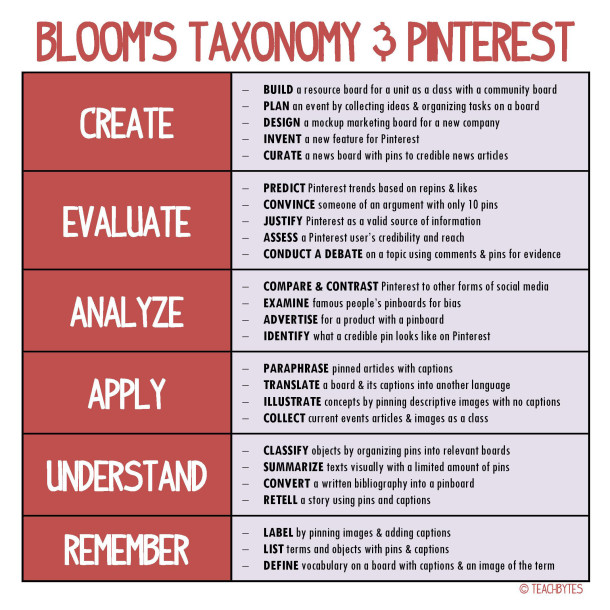VirtualMV/Digital Learning Technologies/Social/Pinboards
| Digital Learning Technologies | ||
|---|---|---|
| Social technologies | eMail | Discussion boards | Instant Messaging | Facebook | Linked-in | Pinboards | Web conferencing | Other | |
| Others | Blogs/Microblogs | |
Contents
Overview
Pinboards allow group sharing by pinning "sticky notes" onto an onscreen noticeboard
Pinboards are a great learning tool for educators and learners. They are a form of communication where ideas and thoughts are translated visually onto a digital pinboard. They can be used for:
- Curating Content
- Brainstorming
- Engaging Students
- Conference summaries/notes
- Teaching on copyright and digital citizenship [1]
Smiley100 (talk)
Examples
An example of an application that uses Pinboards is 'Pinterest'. "Pinterest is a place to discover ideas for all your projects and interests, hand-picked by people like you." [2]
This website encourages users to 'Pin' anything they want to save anywhere on the web or on Pinterest itself.
I also found a short 2-minute 'YouTube' video which describes what 'Pinterest' is.


-Nottaane (talk) 22:32, 17 April 2015 (UTC)
How to use Pinterest
- 'Pin' a link to add it to your 'board'
- 'Repin' a link to add someone else's pin to your board
- Search for other people's pins and repin them
- Use the 'Pin it' button on websites to easily pin that site to your board
- Organise your boards however you like
- Change the settings to allow others to contribute to your boards
- Set boards that you don't want anyone else to see as 'Private'
Added by Caryslloydnz (talk) 23:15, 6 March 2016 (UTC)
How educators can use Pinterest

There's a really helpful guide on Edudemic called 'The Teacher's Guide To Pinterest' with information, links and infographics about how to use Pinterest in the education setting. Some suggestions for using Pinterest include:
- Share quotes and inspiration with your students or other educators
- Suggest reading materials
- Show student work
- Encourage student peer critique
- Create boards relevant to the subject or extra-curricular activity
- Collaborate with other educators to share lessons and content
There is also a lot of information on Pinterest itself on how Pinterest can be used in the classroom. For example, Pinterest user Tina Wahlert has a Pinterest board with over 60 links and 4,200 followers.
Rao (2013)[3] created an infographic about how Bloom's Taxonomy can be used in the classroom by using Pinterest as a tool.
Added by Caryslloydnz (talk) 23:15, 6 March 2016 (UTC)
Use of Pinterest for teacher professional development
Cummings (2015)[4] discussed how teachers are using Pinterest for professional development, to find 'creative lesson plans, classroom decorations, and teaching tips'. She notes that, although Pinterest won't replace the traditional, in-person forms of professional development, those forms are often too rigid an inefficient. Pinterest can 'help teachers search for exactly what they want to learn', and 'connect with others who teach the same grades or subjects'.
Added by Caryslloydnz (talk) 23:15, 6 March 2016 (UTC)
References
- ↑ S, E. (2012, March 19). Pinterest for Educators. Retrieved 28 March, 2015, from www.edutopia.org/blog/pinterest-for-educators
- ↑ Introducing Guided Search | About Pinterest. (n.d.). Retrieved from https://about.pinterest.com/en/whats-pinterest
- ↑ Rao, A. (2013, April 19). 25 Ways To Use Pinterest With Bloom’s Taxonomy. Retrieved March 06, 2016, from http://teachbytes.com/2013/04/19/25-ways-to-use-pinterest-with-blooms-taxonomy/
- ↑ Cummings, M. (2015, April 2). There’s a Big Hole in How Teachers Build Skills, and Pinterest Is Helping Fill It. Retrieved March 06, 2016, from http://www.slate.com/blogs/schooled/2015/04/02/pinterest_and_teachers_how_the_site_is_filling_a_gap_in_teacher_training.html